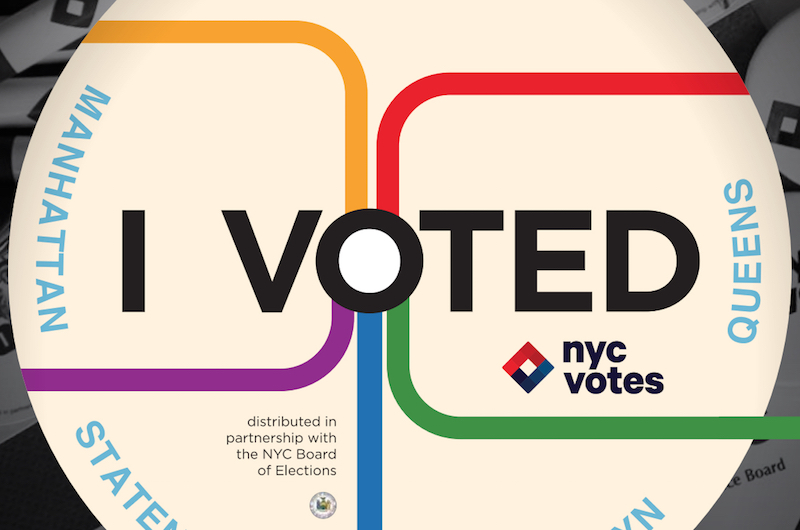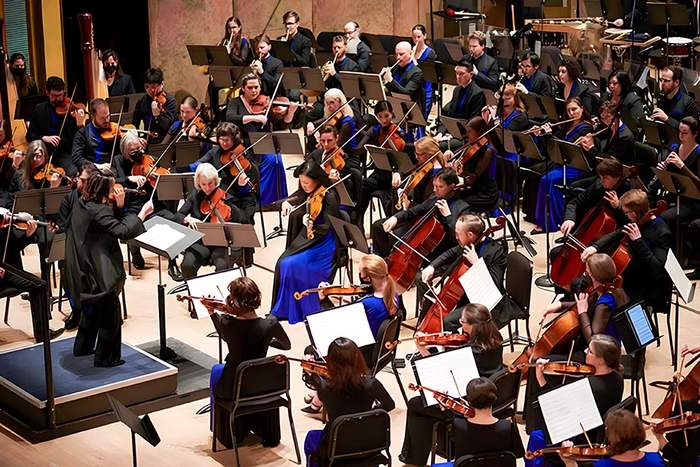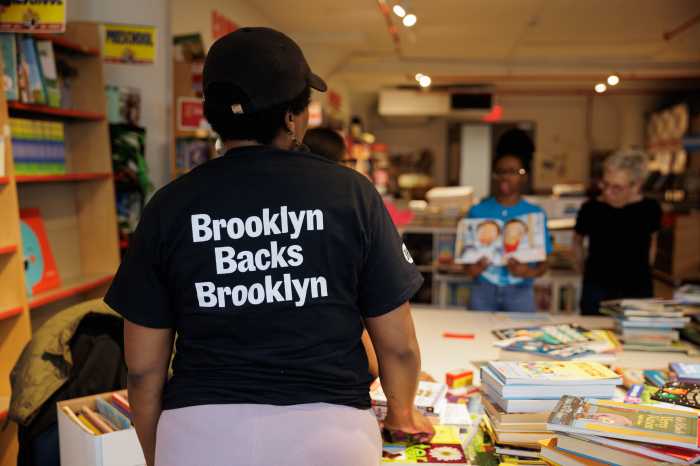Anyone who has ever shopped at Trader Joe’s knows the power of having a process that works. In addition to friendly staff and quality products at modest prices, the chain has one of the most seamless checkout processes I have ever witnessed. In fact, the process is so well-coordinated they have no need for a self-checkout area.
The New York City Board of Elections (BOE) should take note.
As a lifelong New Yorker, I have watched the BOE hopelessly slide into the pantheon of the city’s Great Woes. Which brings me to the process. I arrived at my voting site – an elementary school in Prospect Heights – Tuesday night, to news cameras out front. Inside, voters were attempting to either find a queue or maintain one. No small feat, considering the sheer lack of people on hand to guide a steady stream of voters to their appropriate destinations. The BOE has three lines: one to check your Electoral and Assembly (ED/AD) districts, one to receive your paper ballot and, finally, one to electronically scan your ballot. I already knew my ED/AD, but in the interest of democracy, I decided to double-check.
The weather outside had cooled, but the air inside was thick and humid. A group of children, escorted by an adult, sold baked goods to water-logged voters anxious to cast and go. Three workers were seated at the ED/AD tables, yet only one seemed to be tasked with providing any information. By now, the line was snaking out of the school building. In contrast, the other worker remained seated, her arms folded, her face plastered with a Mona Lisa smile. Perhaps sensing the need to step in, the third poll-worker stood up and quietly asked if anyone needed help. And while some might consider this “jumping the line,” I sensed other voters subtly looking for ways to speed up their process.
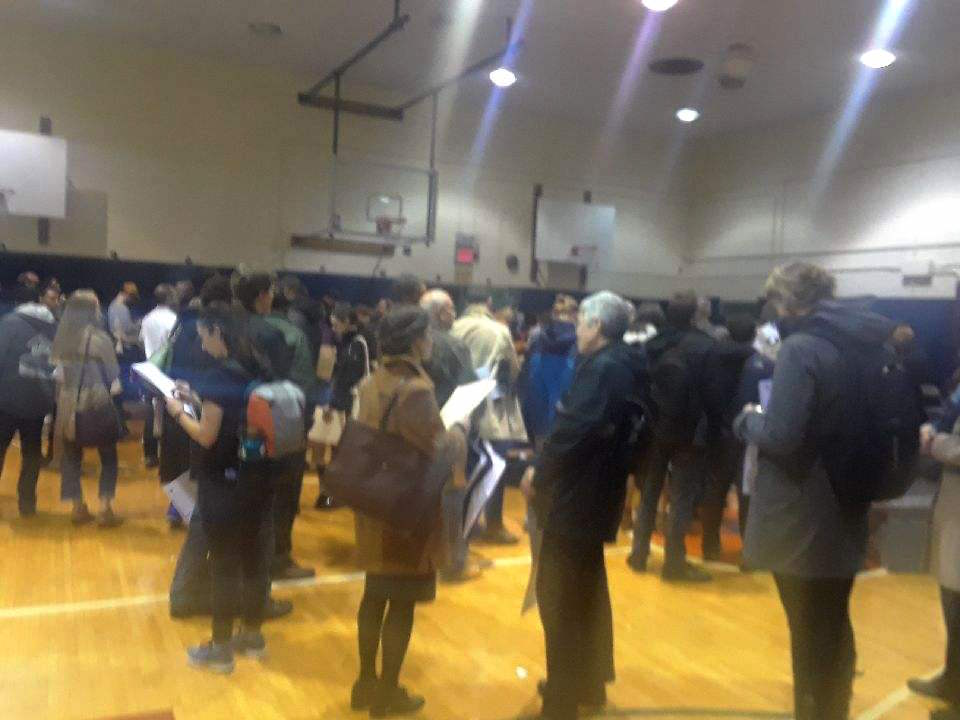
After my information checked out, I headed to yet another over-staffed and under-utilized table. Here, the worker to our right verified the voter’s name and address, then painstakingly searched for the registration information, after which, she instructed us to review and confirm said information, before a final sign-off under our existing signatures. As she did this, the other worker simply stared off into the distance, stopping occasionally to sort through a stack of papers and hand out a ballot. This process took an average of three minutes per person. By the time I received my ballot, my four -person line had jumped to 12. People tried graciously to remain patient with the pace of the poll workers, many of whom were long-time voters themselves, but it was evident tensions were rising as the gymnasium filled.
Two poll workers and a set of stanchions could have resolved this.
Even postal workers occasionally leave their booths to “sweep the line.” Though seemingly commonplace, the opportunity for a customer to be heard and engaged is not lost on us, especially when it comes to navigating the byzantine intricacies of the city’s municipal services. Anyone who has ever had to pick-up a package from USPS can tell you how efficient this small step can be; yet the BOE cannot deploy even the most basic, common-sense customer service measures that ensure New Yorkers can carry out their civic duty.
Michael Ryan, Commissioner of the BOE, has done little to apply even the slightest of reforms to stem the pervasive lack of civic education at play here; add to that the constant barrage of a 24-hour news cycle and the countless New Yorkers already scarred by long waits, late openings and limited scanners. Now Mr. Ryan has upped the ante to include that our precious ballots may indeed go uncounted as those overzealous workers “crammed and jammed” wet ballots into already over-burdened machines.
While these concerns were enough to thwart some voters from showing up at the polls at all, many more were intent on casting their ballot, if not for anything more than to consciously stand up against what can only be construed as classic voter suppression.
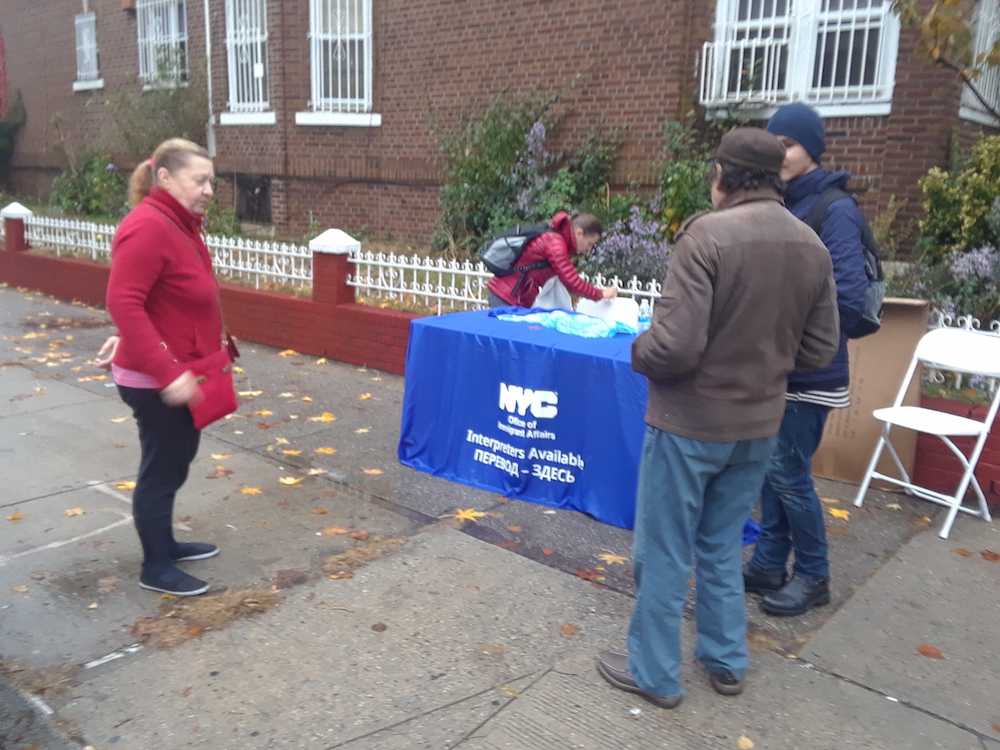
Post-vote, I bumped into former colleagues and friends, who although prime voters (meaning voters who participated in the last general election), seemed unaware that poll workers were not allowed to ask for photo identification. Even more troubling was the disappointment they expressed at not being asked to prove their identity – a combination of fear and loathing that suggests either a) their vote would not be rightfully attributed to them, or b) the added risk of corrupting an already beleaguered voting system. As one friend stated, “If what you’re saying is true, I could walk in to as many locations as I wanted and vote as many times as I wanted?”
Election time is unique in that it simultaneously demonstrates and challenges New York’s reputation for impatiently waiting. Voters walking off lines, missing work and losing wages, only to be faced with the likelihood of spending hours to exercise a right that should take no more than a few minutes, is unfathomable.
Perhaps most alarming is the likelihood that some voters – particularly the “18’s in ’18” – may have unknowingly completed their ballot incorrectly. Thanks to so-called “fusion-voting,” candidates who win nominations from several political parties are allowed to be listed multiple times in the same contest. First-time and re-engaging voters may find themselves deciphering what appears to be some type of ancient spreadsheet. In this case, if a person were to fill-in too many ovals for a particular contest, that would count as an ‘over-vote,’ and that vote can very well go uncounted, if it is not caught by the scanner. Similarly, voters expressed both a unawareness and hesitance to utilize the absentee ballot option which would permit registered voters up to 32 days prior to the election, to cast their vote (if they prove they are unable to physically vote in New York on Election Day).
Yet, inexplicably, my polling site failed to provide me with a privacy folder, pen, and most importantly, the multi-lingual one-pager that carefully explains how to read the ballot and cast your vote. Unfortunately, most voters were more likely to risk under- or over-voting, than to deal with an ‘overzealous’ poll worker. I lucked out when I learned about the Emergency Ballot Box – a literal black box of sorts where voters who are unable to electronically cast their vote can place their ballots. The ballots are later scanned by a poll worker. Although convenient for some, this poses additional and essential questions about vote tampering, confidentiality and ethics.
Which is why what happened right before then was so deeply distressing. After signing the registration log, I observed the same poll worker recording my first and last name on a separate sheet of loose-leaf paper filled with names. When asked why, she mumbled something along the lines of “just in case.’’
I’m sorry, but just in case of what?
Although, many of my neighbors in and around Downtown Brooklyn fared far better at their respective sites, which ranged from the Farragut Community Center to St. Francis College, it’s almost heart-breaking to hear the disappointment in the voice of a first-time voter in Brownsville whose site ran out of stickers.
As of the last session in Albany, the Senate has stalled in enacting legislation since passed in the Assembly in April 2018. The package promises to “increase voting opportunities”, and “modernize the voter registration process,” with concrete options such as early voting and (perhaps, gasp! – online voting).
Until then, we wait in the hopes that our great, great city will finally put an end to its bitter and shameful history of unchecked voter disenfranchisement and instead focus on delivering a seamless, consistent and integritous voting experience deserving of the denizens who strive to protect it.


